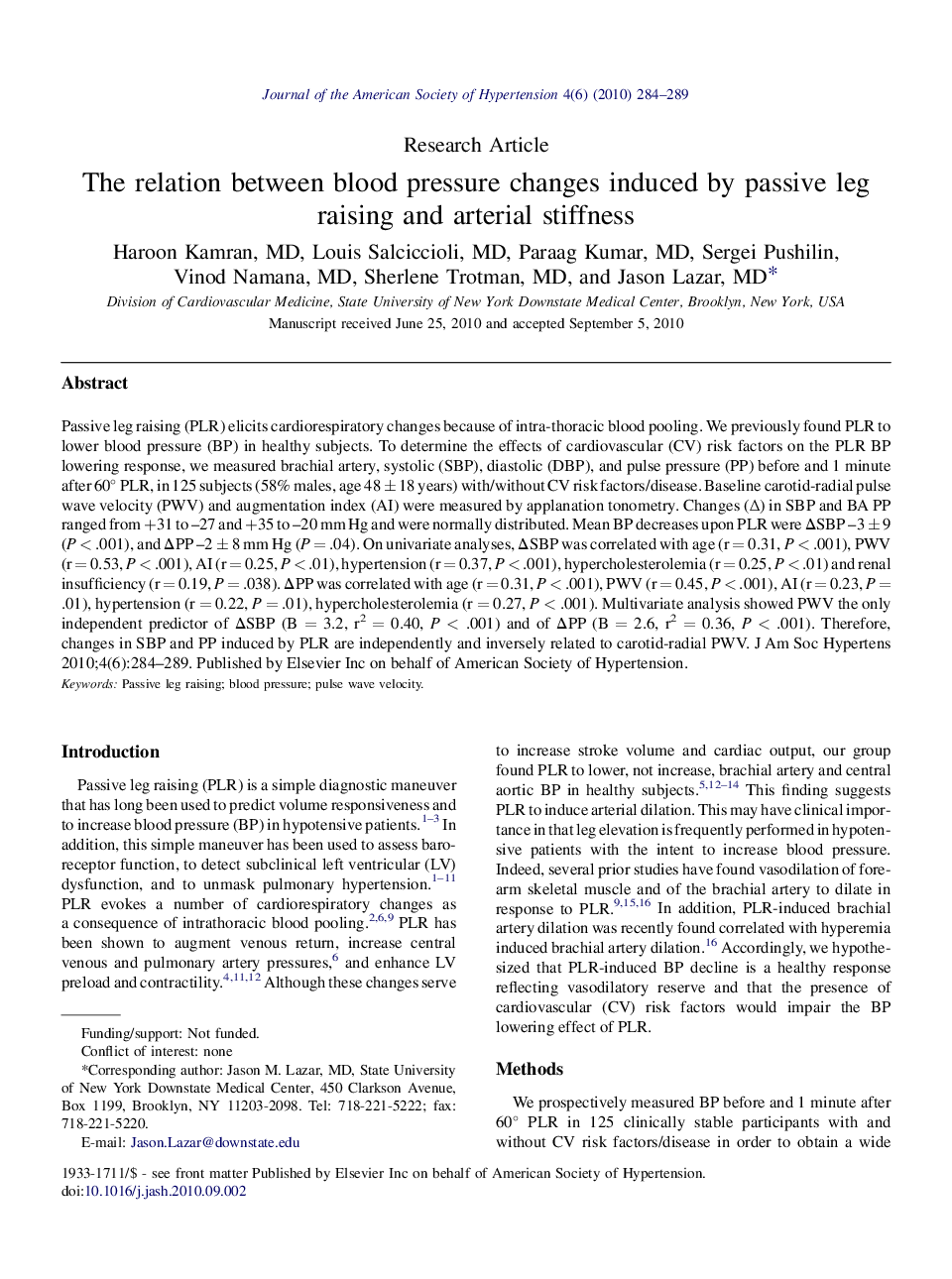| Article ID | Journal | Published Year | Pages | File Type |
|---|---|---|---|---|
| 2957223 | Journal of the American Society of Hypertension | 2010 | 6 Pages |
Passive leg raising (PLR) elicits cardiorespiratory changes because of intra-thoracic blood pooling. We previously found PLR to lower blood pressure (BP) in healthy subjects. To determine the effects of cardiovascular (CV) risk factors on the PLR BP lowering response, we measured brachial artery, systolic (SBP), diastolic (DBP), and pulse pressure (PP) before and 1 minute after 60° PLR, in 125 subjects (58% males, age 48 ± 18 years) with/without CV risk factors/disease. Baseline carotid-radial pulse wave velocity (PWV) and augmentation index (AI) were measured by applanation tonometry. Changes (∆) in SBP and BA PP ranged from +31 to –27 and +35 to –20 mm Hg and were normally distributed. Mean BP decreases upon PLR were ΔSBP –3 ± 9 (P < .001), and ΔPP –2 ± 8 mm Hg (P = .04). On univariate analyses, ΔSBP was correlated with age (r = 0.31, P < .001), PWV (r = 0.53, P < .001), AI (r = 0.25, P < .01), hypertension (r = 0.37, P < .001), hypercholesterolemia (r = 0.25, P < .01) and renal insufficiency (r = 0.19, P = .038). ΔPP was correlated with age (r = 0.31, P < .001), PWV (r = 0.45, P < .001), AI (r = 0.23, P = .01), hypertension (r = 0.22, P = .01), hypercholesterolemia (r = 0.27, P < .001). Multivariate analysis showed PWV the only independent predictor of ΔSBP (B = 3.2, r2 = 0.40, P < .001) and of ΔPP (B = 2.6, r2 = 0.36, P < .001). Therefore, changes in SBP and PP induced by PLR are independently and inversely related to carotid-radial PWV.
